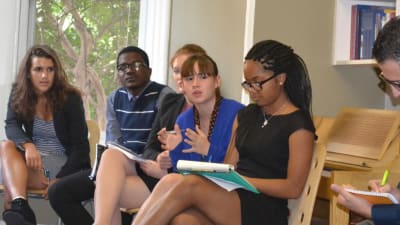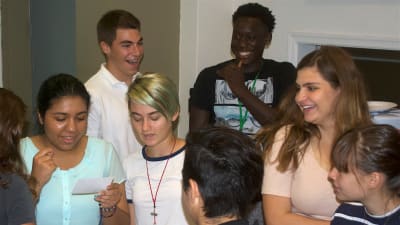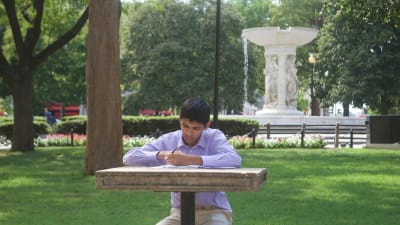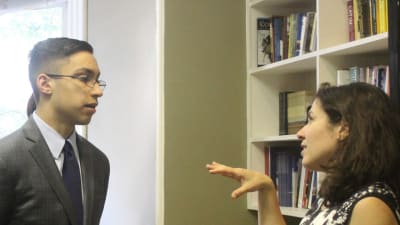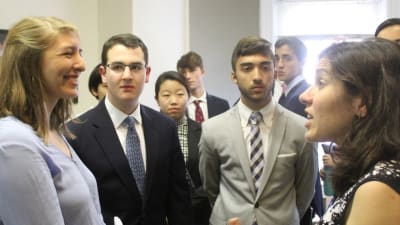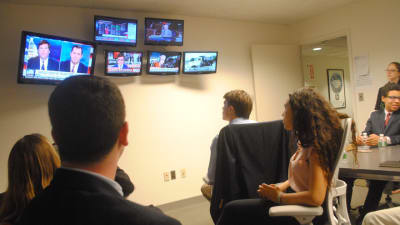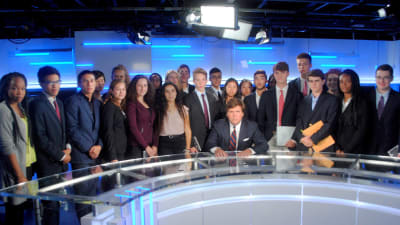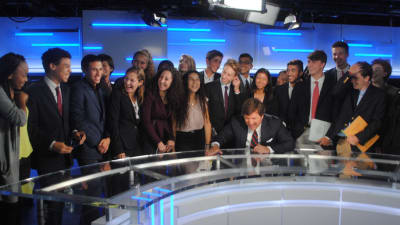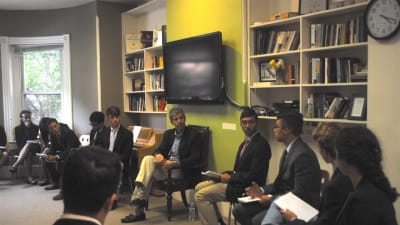Ethics, the Media, and Fake News: Week One at SEGL
What is truth is no longer just a question for philosophy majors. Today, we must ask it every time we consume the news. This question of truth dominated our first case study of the semester, on media literacy and media bias. Along the way, our students met with two respected newspaper journalists and one of the most powerful TV news hosts in the business.
The Infamous Skittles Scenario, which always begins our first case study, is an SEGL tradition. A hands-on state-of-nature simulation that has students scurrying after plastic bags of candy and cackling with delight or dismay at 3×5 “Chance” cards, the simulation is an engaging introduction to ethical decision making. (What would you do, after all, if there were no rules and limited resources? Would you use that gun you found? Help out a suddenly-blind friend? Lie? Join a makeshift band of marauders?) The conversation that followed was both high-energy and reflective.
We then gave the students an introduction to classic Western ethical theory–Aristotle, Kant, and John Stuart Mill–a 20 minute lecture punctuated by excellent student questions.
On Wednesday, we turned our focus to the media. Our first exercise helped students understand the challenge of modern news production and consumption: after asking each student to write down the news sources she or he used most, we asked all students to arrange those sources on a matrix. On the “x axis” of that matrix was the liberal-conservative spectrum; on the y-axis how reliable each source was. The results were fascinating and showed both assumptions and blind spots in our group’s favorite news sources; it also helped create many questions for our guest experts.
That afternoon we welcomed noted Washington Post journalist Karoun Demirjian. Demirjian, who is frequently on the front page of the paper (here is her most recent effort) and often on cable news (here is a recent CNN appearance; start at 1:07), spent nearly 90 minutes answering questions about her own journalistic ethos, the newspaper industry, how she creates “quick and honest understanding” with her subjects, and how her gender creates both obstacles and opportunities. (Memorable quotation: “Ethics is all you have.”)
On Thursday night, we went to DC’s Fox News headquarters to see a live taping of Tucker Carlson Tonight. One of the only media personalities to work for all three of the major cable news networks, Carlson recently took over the 9pm weeknight time slot from Megyn Kelly when she left for NBC earlier this year. After a tour of the headquarters (and an initial high-energy meeting with Carlson), the students rotated through the on-air studio five at a time–one group per segment–watching Carlson interact with several guests–most of them in-studio–about the day’s top news. After the taping, Carlson and his assistant invited all the students to the anchor desk, where we asked about immigration policy and Western values, his views on Afghanistan, and the importance of speaking one’s mind. (Memorable quotation: “Never let anyone keep you from speaking what you think is true”).
On Friday, we welcomed two-time Pulitzer Prize-winning journalist Eric Schmitt. Among other distinctions, Schmitt was the New York Times‘ main contact for WikiLeaks founder Julian Assange, and Schmitt has ample experience wrestling with the ethical issues our case study raised. The students heard several intense stories (including the time he snuck into Saddam Hussein’s final hiding place), his take on the current media landscape, and his advice for news readers in the “fake news” era.
Saturday morning brought our first “Saturday Academy” (a twice-monthly visit to a noted DC landmark): a trip to the Newseum, where students saw pieces of the Berlin Wall and World Trade Center, the famous Pulitzer Prize-winning photo exhibit, and Guardian reporter Ben Jacobs’ glasses, which Montana Congressman Greg Gianforte smashed in a colorful incident this past summer.
Next up: the Israeli-Palestinian Conflict!







